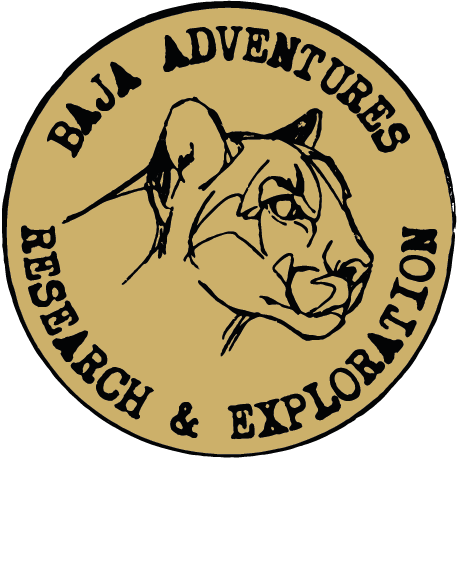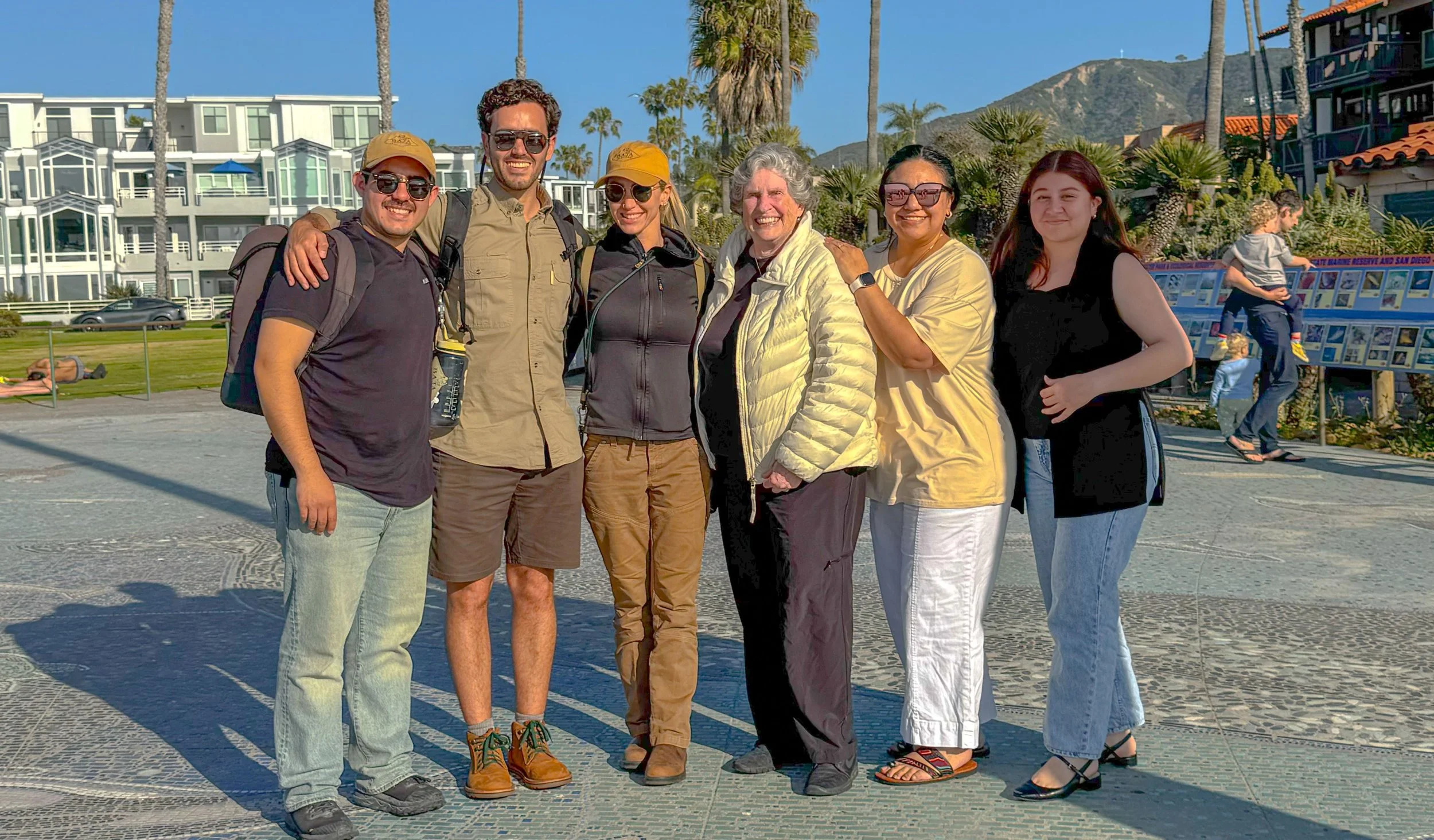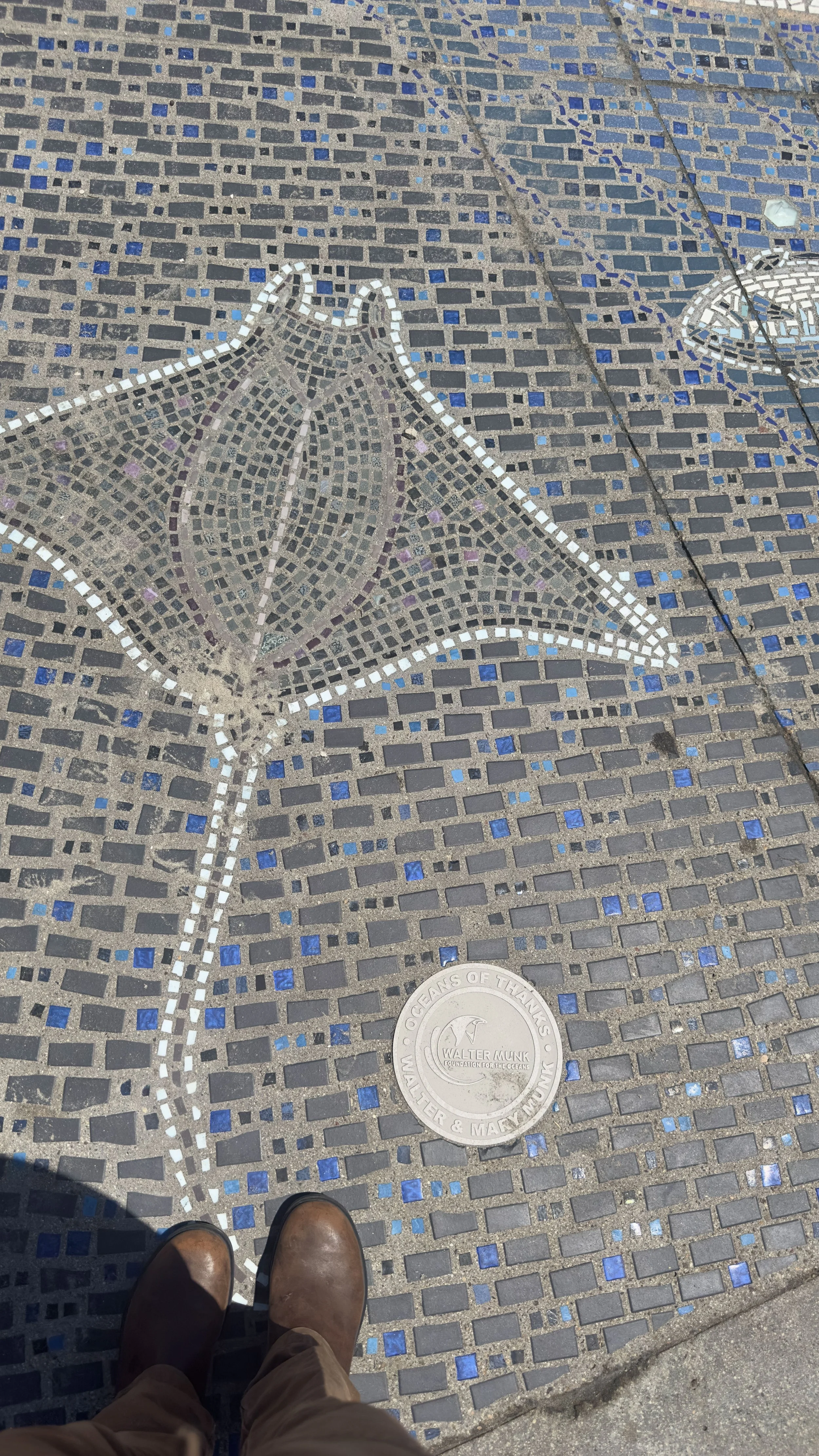Uniting for ocean conservation: Baja Adventures, the Nakawe Project, and the Walter Munk Foundation
At Baja Adventures, we are passionate about connecting people with the ocean and its incredible biodiversity. Through our sister nonprofit organization, the Nakawe Project (501(c)(3)), and collaborations with local initiatives like Kilometro Uno, we focus on marine conservation, education, and immersive field experiences in Baja California Sur.
Osmar Sanmiguel (Kilometro Uno), Leopoldo Sanmiguel and Regina Domingo (Baja Adventures & Nakawe Project), and Ms. Mary Coakley Munk with her team Maggie & Paola from the Walter Munk Foundation
A highlight of our May was meeting Ms. Mary Coakley Munk and her team in La Jolla. She co-founded the Walter Munk Foundation for the Oceans with her husband, the legendary oceanographer Walter Munk, known as the “Einstein of the Oceans' and visiting “The Map” the largest LithoMosaic in the world, depicting the bathymetry of La Jolla Canyon and over 100 marine species indigenous to our coastal waters.
Walter Munk’s pioneering research revolutionized our understanding of ocean currents, waves, and climate, and his legacy lives on through the Walter Munk Foundation for the Oceans. The foundation is dedicated to ocean science, education, and conservation, and supports programs that inspire the next generation to protect our seas.
Mobula munkiana, commonly known as Munk’s devil ray, is a remarkable species endemic to the Eastern Tropical Pacific, ranging from the Baja California Peninsula in Mexico down to Peru, including the Galapagos Islands. These rays are known for forming large aggregations, especially in the Gulf of California and around Loreto, where thousands gather during peak seasons, often linked to feeding on abundant plankton like mysid and euphausiid shrimps or engaging in mating behaviors.
Scientific studies have revealed that these rays use specific coastal areas in the Gulf of California, such as Ensenada Grande near the Espiritu Santo Archipelago, as critical nursery grounds where neonates and juveniles reside year-round. These shallow, warm bays provide protection from predators and abundant food, facilitating faster growth during vulnerable early life stages.
Mobula munkiana breaching in the gulf of california Loreto by Regina Domingo from baja adventures wildlife expedition leader and founder at the Nakawe Project
The migration patterns of mobula munkiana are still not fully understood, but evidence suggests seasonal movements linked to reproductive and feeding needs. After aggregating in the Gulf of California, they migrate through the Eastern Pacific, traveling to regions like Costa Rica and other productive upwelling zones along the Pacific coast. These migrations highlight the importance of international cooperation for conservation, as mobula rays and other migratory marine species depend on healthy, connected ocean habitats across national boundaries.
Mobula munkiana aggregation during a Baja Adventures expedition in Loreto, photographed by Regina Domingo.
Reproductive behavior studies have documented fascinating courtship rituals in the Gulf of California, including large “courtship vortex” formations where hundreds of rays swim in coordinated circles, and “piggyback leaps,” a pre-copulatory behavior unique to mobulids. These behaviors occur mainly from March to August, peaking in May, emphasizing the seasonal importance of the region for their life cycle.
Regina Domingo founder at the Nakawe Project freediving with Mobulas Munkiana in the Gulf of California, Baja California Sur.
Understanding and protecting the migratory routes and critical habitats of mobula munkiana is vital, as these rays contribute to the ocean’s biodiversity and health. Their migrations through the Pacific connect diverse ecosystems, from Baja California to Central America, underscoring the need for collaborative conservation efforts across countries to ensure their survival and the overall wellbeing of marine life.
At Baja Adventures, we believe in the power of collaboration. We are excited to join forces with the Walter Munk Foundation for the Oceans and like-minded organizations to promote ocean education, field trips, and awareness campaigns about the vital role of the ocean as our life support system.
Our regenerative tourism model in Loreto, Baja California Sur, Mexico, operates year-round expeditions where participants and the general public can join us to encounter incredible species like mobula munkiana, dolphins, blue whales, and more.
Check our year round expeditions here:
Baja Adventures expedition boat in Loreto BCS, Mexico
We always prioritize conservation and are committed to expanding our involvement with the Walter Munk Foundation to shine a spotlight on species like mobula munkiana and the urgent need to protect migratory marine life.
The next October 4th, 2025 at La Jolla Shores we’ll participate in the annual Walter Munk Day, celebrating and honoring Walter’s 80-year legacy of daring exploration and discovery through scientific research, education and ocean conservation. The purpose of this event is to raise awareness of the fragility of our oceans and showcase Kumeyaay Heritage and Culture. We will be hosting a booth dedicated to the importance of biodiversity, the wonders of migratory species, and our regenerative tourism and conservation projects in Baja California Sur. We invite everyone to join us in celebrating the ocean, learning about its incredible creatures, and working together to ensure a thriving future for our blue planet.
As mobula rays gather in great numbers, so too can we—by joining forces, we amplify our impact for ocean conservation.







